Leica X Vario: Functional Issues
Image Rotation | Manual Focus Assist | Auto Review | Viewfinder Peculiarities | Auto ISO Settings | Auto ISO Display | Automatic White Balance? | Conclusions | Addendum: What Other Users Say... | References
Archive
While I like my Leica X Vario, it also has a number of functional issues or, in my opinion, deficits that need improvement. I list and discuss these on this and on related pages. Hopefully, most of the issues can be resolved in the future...
Note: I added comments with regard to firmware update version 1.1 (15 September, 2014). See page Firmware for details.
Overview
I discuss the following functional issues (or non-issues...):
- Autofocus (the most heated debates were around this issue... - not discussed on this page)
- Image Rotation
- Manual Focus Assist
- Auto Review
- Viewfinder Peculiarities
- Auto ISO Settings
- Auto ISO Display
- Automatic White Balance? (more or less, a non-issue in my opinion)
Notes
- I deal with autofocus (AF) issues on the following pages: Functional Issues - Autofocus (Introduction), Functional Issues - Autofocus (Real World Photos), and Functional Issues - Autofocus (Test Photos).
- I deal with design issues on page Design Issues. Of course, you may question whether something can be regarded as a design or a functional issue. I list missing features there, that is, as design issues, because they are not included in the design...
Image Rotation
A number of posters in the Leica forums bemoaned that image rotation works somewhat erratically on the Leica X Vario. Typically, images are not rotated automatically that should be rotated. I do not know why this happens, but I have observed this issue myself often enough to wonder about it.
This issue is not a "deal breaker", but Leica should take a closer look at it.
Manual Focus Assist
There are two things with the manual focus assist that need, in my opinion improvement.
Firstly, the time interval (2-3 seconds according to my measurement; 5 seconds according to the manual), in which the magnified section is displayed, is too short for me - it is NEVER sufficient for me to set the focus properly. Usually, it is displayed whenever you change the focal length with the manual focus ring.
This is typically OK when the target object is farther away. For close-up shots, however, I change my focusing strategy: First, I set roughly the correct distance with the focus ring, and then I fine-tune the distance by moving the camera. This takes longer, also because I cannot hold the camera steadily, and typically the magnified section disappears before the target object is in focus. Usually, I have to press the DELETE/FOCUS button several times before I am done. As a result, and also because of the poor image quality of the magnified section (see below), I tend to focus without magnification, which is possible for me with the electronic viewfinder of the X Vario.
Suggestion for improvement: Why not display the magnified section as long as the DELETE/FOCUS button is being pressed? Alternatively one might set this button as a toggle so that a second button press would cancel the display of the magnified section.
Secondly, the image quality of the magnified section is poor. When I handed the camera over to a colleague, he immediately criticized screen magnification as unusable (that is, too fuzzy). I would not subscribe to this, but I also find that the magnified image is too fuzzy and therefore tend to do without magnification (or focus assist) when focusing manually.
Suggestion for improvement: From my Ricoh GXR, I know that when a section of the screen is magnified, there seems to be a difference between displaying the magnified section fullscreen or as a section within its context, as Leica does. In the second case, image quality is much poorer than in the first case on the Ricoh. Perhaps, this trade-off is also valid for Leica and Leica should consider displaying the magnified section fullscreen - or at least offer a choice between the two as Ricoh does.
Auto Review
I observed a bug and a few quirks related to automatic review (called "Auto Review" in the manual and menu).
Not that "Auto Review" has several options that you can select in the menu: Off, 1 Second, 3 Seconds, 5 Seconds, Hold, Zoom. These are not listed in the manual and therefore not explained there. Here is my short extension to the manual:
- Off: No review image is displayed after a photo has been taken
- 1 Second, 3 Seconds, 5 Seconds: The review image is displayed for the respective number of seconds
- Hold: The review image is displayed until you take a certain action, for example, half press the shutter button.
- Zoom: The review image is displayed for a few seconds (depends on whether
you take DNG+JPG or JPG-only photos) and then a magnified section of the
review image is displayed fullscreen for about 1 second.
Please note that I found a use for this setting - I describe this elsewhere.
Note that you can cancel the review image by half-pressing the shutter button (this feature is not well known among X Vario users). Also note that in the "Zoom" setting, the magnified section is, in contrast to manual focus assist, displayed fullscreen.
This is, at least, what I expect "Auto Review" to do. Here is what it does in reality:
- Off: When auto review is set to "Off", it behaves as if it were
set to one second - with the same quirks that I describe below...
>> This issue simply seems to be a firmware bug. - 1 Second, 3 Seconds, 5 Seconds:
When I set a review time of 1 second, the actual review time is about 3
seconds (similar to the 3 seconds setting).
Read below about display freezes after automatic review was cancelled*. - Hold: Works as expected*.
- Zoom: Works mostly as expected. Sometimes, the review image does not seem to appear, sometimes, it takes fairly long before it appears... The latter often causes me to go on (because I am impatient...) before the magnified review image appears so that I miss it (and thus, the confirmation that sharpness is OK...).
*) When I press the shutter release button before the review time has ended (or to end it when using the "HOLD" option), I see, after a brief delay, the live view again. However, when I release the shutter button, the image often freezes again for a short moment in the seconds range (longer for RAW files, shorter for JPEG-only files). Initially, I assumed that the freezes were related to insufficient processing power of the Leica X Vario's CPU. A poster in the l-camera-forum, however, pointed out that the freezes (he had none...) may be due to too slow SD cards. I therefore checked different cards that I own and did not find dramatic differences between the cards (these are actually are hard to tell).
More obvious was, however, that the duration of the freeze depended on how fast I cancelled the preview. When I cancelled it immediately (as possible...), the freeze took longer, when I waited a second or so, it was shorter, and when I waited about 5 seconds or so, there was just a very brief freeze of the display (there seems always to be a very brief freeze, when the shutter button is released after canceling the preview).
What does this tell us? I assume that the live view freeze is caused by the process of writing the image to the card. If the image has already been written to the card when the shutter button is released, the freeze is just a short blink, maybe caused by some camera-internal processes, for example, the view switching. All in all, the live view freezes cannot be regarded as a bug, but they might potentially be reduced or eliminated through better programming.
Viewfinder Peculiarities
Note: The following is valid for the electronic viewfinder (EVF) as well as for the LCD screen.
In the Ricoh GXR section, I write about Sean Reid's observation that the lens is not always set to maximum aperture during focusing, making particularly manual focusing difficult. Reid reported this issue also for the Leica X1, but I have not yet investigated this any further for the Leica X Vario.
Here, I would like to present another issue. On practically all digital cameras that I have owned, the electronic viewfinder was of great help for me in judging the correct exposure of a photo to be taken. In hindsight, I may have forgotten that this required some training, but overall, I had few issues in this respect. However, when I switched to DSLRs with optical viewfinders, my problems began... Here the viewfinder offers a bright image that is perfect for focusing, but there is no indication of whether a photo will be/was exposed properly. To find this out, you have to view the image afterwards on the LCD screen. This is cumbersome, and I have to admit that I regularly forgot to check exposure after I had taken a photo. As a result, there were a lot of incorrectly exposed photos - and there were no variants where I had tried to improve exposure, because I was not aware of an issue...
After I sold my DSLR gear and bought the Ricoh GXR, I regained the feature of being able to judge exposure, including the short preview after I had taken a photo. In addition, when I compensate exposure, the viewfinder provides a reliable impression of the compensation effect.
To make a long story short, with my X Vario, this has changed. For me, the image in the viewfinder is no longer a reliable basis for judging exposure. Typically, it is too bright under low light conditions, such as in a dark church. The automatic review image also seems to be too bright.
Sometimes, I set the camera to underexposure, only to learn that it did indeed expose the image perfectly (or at least better than expected) with normal exposure. When I took photos in a Swedish church, I was so confused by this phenomenon that I decided to use exposure bracketing - resulting in having three images to choose from, instead of one...
When I set the camera to underexposure, the image in the viewfinder gets considerably darker than I would expect for 1/3 or 2/3 of an f-stop. I played around with exposure compensation and found out that even a slight overexposure leads to too dark images in the viewfinder. The brightness difference between EV0 and EV -0.3 is striking and grows with stronger underexposure. In the direction of overexposure, the behavior is different. At first the viewfinder image is indeed brighter, but within a second is dims again. Only an overexposure of about an f-stop (EV +1.0 or EV +1.3) leads to the same brightness as the viewfinder shows with no exposure compensation. All this behavior may have a reason, but for me it is definitely confusing...
Auto ISO Settings
In the menu, there is the option "Auto ISO Settings" which offers two submenus with the following, undocumented options:
- Slowest speed: Allows to define the slowest shutter speed that is
used, for example, to prevent blur
Options: 1/30, 1/15, 1/8 - Max ISO: Allows to set the maximum ISO value, for example, to control noise
Options: 400, 800, 1600, 3200, 6400
Many users were unsatisfied with the slowest shutter speed and wanted that it can be extended to shorter speeds (I was told by user barjohn that the Leica T allows a range from 1 sec to 1/4000 sec). Thus, while I would not call this item an issue, there is a demand for shorter slowest shutter speed with Auto ISO, which could easily be satisfied in a forthcoming firmware update.
Update
With firmware update 1.1 (15 September, 2014), the following options are available:
- Slowest speed: Allows to define the slowest shutter speed that is
used, for example, to prevent blur
Options: Auto, 1, 1/2, ..., 1/500, 1/1000 (full steps) - Max ISO: Allows to set the maximum ISO value, for example, to control
noise
Options: 400, 800, 1600, 3200, 6400 (no change)
The "Auto" setting for the slowest shutter speed is not documented by Leica. I assumed that, for this setting, the slowest shutter speed depends on the focal length that has been set for the camera and was able to confirm this (28 mm: 1/30 s, 35 mm: 1/40 s, 50 mm: 1/50 s, 70 mm: 1/80 s; in the middle between 50 mm and 70 mm, I got 1/60 s).
Auto ISO Display
As mentioned by barjohn in several posts in the l-camera-forum, when using Auto ISO it would be desirable that the ISO value, which the camera is going to select, is displayed*. Of course, this is only possible after you half-pressed the shutter button or a measurement has been taken otherwise. The automatically selected ISO value is useful information. If it is too high, you may want to set a lower ISO value manually.
Should I mention the following? Of course, my Ricoh GXR and GR can do this...
*) When you set Auto ISO, no ISO value is displayed ("full" information display mode). The automatically selected value can therefore be displayed in the position where the manually set ISO value is displayed:
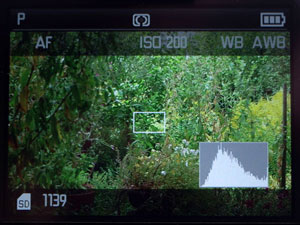 |
 |
Figure: The automatically selected ISO value could be displayed in the position where the manually selected ISO value is displayed (left). A different color, such as yellow, could indicate that this is an Auto ISO value (right).
Automatic White Balance?
A poster in the dpreview Leica forum praised the Leica X Vario's automatic white balance (AWB), whereas in the same thread another poster admitted that it occasionally gets fooled. So, opinions seem to be divided.
From time to time, I encounter AWB inconsistencies. But I had and still have such issues with other cameras as well. So I am not too worried about these few inconsistencies and do not list them under the topic of "issues."
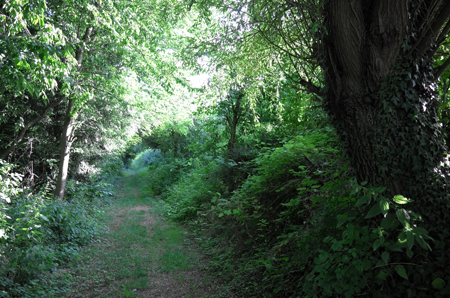 |
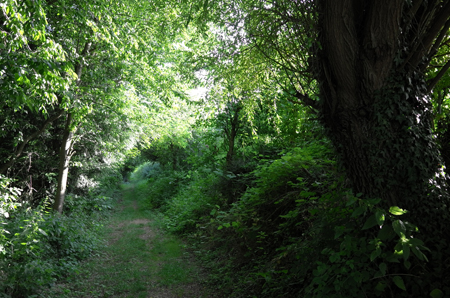 |
 |
 |
 |
 |
What worries me a little bit, however, is the fact that under certain conditions (shade, little sun, some sun spots), AWB delivers photos that appear rather "dull" to me. Sometimes, they seem to consist just of gray and green, often yellow seems to be missing. On the other hand, I do not like the, for my taste, oversaturated photos by some X Vario posters, which are praised as beautiful colors by others.
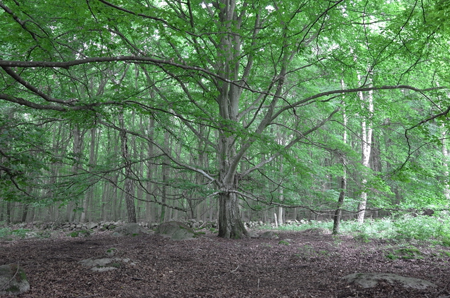 |
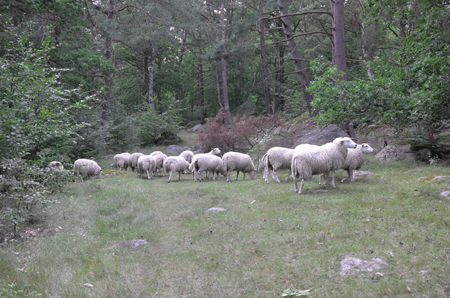 |
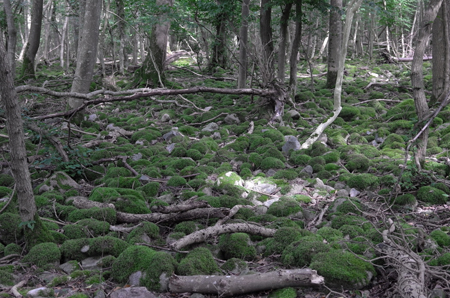 |
 |
| Sun spots are often rendered more or less white | |
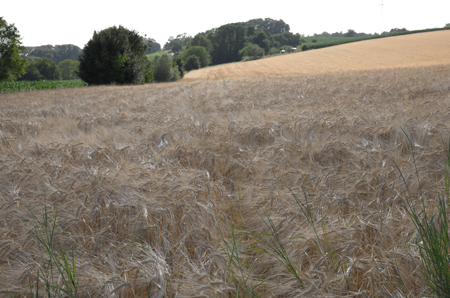 |
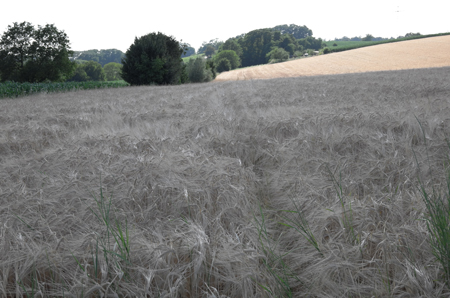 |
| White balance can change dramatically when whe sun goes away | |
I also observed that the X Vario's JPG output is much "duller" than its DNG output (with default processing). Since I rarely use the DNG format, I cannot tell much about this phenomenon, which has also mentioned by posters in the forums.
You can see examples that demonstrate some AWB characteristics and inconsistencies on page Automatic White Balance.
Conclusions
There are definitely a number of issues with the Leica X Vario, which has been on the market since about May 2013, and these should have been addressed with firmware updates. Such an update has been rumored (for example, by XVarior) at least since the beginning of 2014. Eventually, a firmware update version 1.1 appeared on 15 September, 2014, but internal data suggest that it originates from February 2014 and was withheld for severl months.
In my opinion, this update improved only a few items, with the use of the INFO button for confirming settings being the most important one for me. I supply information about this and forthcoming(?) firmware updates on page Firmware.
Since not much has happened with respect to camera issues, here is still my original list of things that should be done and things that were nice to have in firmware updates for the Leica X Vario (and also regarding design/hardware changes). In the list below, I indicate which things were already addressed with firmware update 1.1.
Must
- Auto Review: Make the "Off" option work correctly (that is, allow to turn "Auto Review" off).
- Autofocus: Improve the working of the AF so that it works on all cameras correctly and also that it does not confirm focus erroneously.
Should
- Auto Review: Make the options 1 Second, 3 Seconds, 5 Seconds works
correctly, that is, make them apply the set duration.
Probably, the camera processor is to slow for this... - Auto Review: Prevent the viewfinder from freezing after Auto Review has
been cancelled, for example, by pressing the shutter button.
Probably, the camera processor is too slow for this... - Image rotation: Make image rotation more reliable
Nice to Have
- Automatic White Balance: Make the color rendition of the images that AWB produces more reliable (it happens rarely anyway that there are differences in identical situations).
- Automatic White Balance: Make the images that AWB produces less dull, particularly when the sun is not shining.
- Auto ISO: Extend the range of the slowest shutter speed to less
than 1/30 sec (maybe up to 1/1000 or 1/2000 if possible) and more than 1/8
(not so important...).
>> Addressed in firmware update 1.1 (the range for the slowest shutter speed is now from 1 sec to 1/1000 sec, plus an "Auto" option) - Auto ISO: Display the ISO value that the camera would select when using Auto ISO (after half-pressing the shutter button, that is, before the shot is taken).
- Manual Focus Assist: Improve the quality of the magnified image so that it is really usable for focusing. Consider displaying the magnified section fullscreen - or at least offer a choice between fullscreen and section (the current option) as Ricoh does (it seems to be the case, at least with Ricoh cameras, that image quality is better if the magnified section is displayed fullscreen.
- Manual Focus Assist: Display the magnified section as long as the DELETE/FOCUS button is being pressed. Alternatively, allow to configure this button as a "toggle" so that a second button press would cancel the display of the magnified section.
- Viewfinder/LCD screen: Improve the simulation of the resulting image so that it is better suited to judging exposure (before and after the shot). This is particularly desirable when exposure compensation is used; here, the simulation is misleading at the moment.
- PLAY Button: Allow canceling "Review" mode by pressing the "PLAY" button.
Nice To Have Hardware (Design) Changes
- INFO button / MENU/SET button: Allow to exchange the functionality
of this buttons so that the INFO button works as MENU/SET button, allowing
to use the camera with one hand.
Nice addition: Offer exchange buttons so that the user can exchange the buttons if desired (or offer the respective exchange service).
>> Addressed in firmware update 1.1 (the INFO button can also be used for confirming settings) - Direction pad: Make the labels readable, preferably offer white labels on a black direction pad.
- Direction pad: Use the "down" position of the direction pad for an "FN" button and allow users to assign various functions to it in the menu.
- Shutter speed dial, Aperture setting dial: Offer exchange buttons with green "A" so that the user can exchange the buttons if desired (or offer the respective exchange service). Engrave the labels instead of painting them on the dials.
- EVF: Allow the use of the EVF-4 or a similar higher resolution EVF for easier manual focusing (I know, I am dreaming...). A better EVF may even allow to focus manually without using screen magnification or other focus assist approaches (see Jono Slack's article Using Manual Focus Lenses on the Leica T).
- Display (Grid): Add a display option where the grid is displayed together with "full" information.
- Sensor: Allow the (in-factory) replacement of the sensor for one without an AA filter (maybe, the same otherwise...) to improve sharpness at the pixel level (to be on par with the Leica T).
- CPU: Allow the (in-factory) replacement of the CPU for one with more processing power to allow the use of higher resolution EVFs and avoid delays and freezes (and AF issues?) that plague the current version of the camera.
Addendum: What Other Users Say...
I am not the only Leica X Vario user who believes that there is room for improvement on the functional (that is, firmware) side. Typical complaints and/or suggestions for improvement refer to:
- Auto ISO: More options wanted, particularly for shortest "longest shutter speed" (>> Addressed in firmware update 1.1: The range for the slowest shutter speed is now from 1 sec to 1/1000 sec, plus an "Auto" option)
- DOF scale displayed in viewfinder in manual focusing mode (see, for example, how Ricoh does it...)
- Magnified review/focus assist image is too fuzzy and therefore unusable
- Offer DNG only instead of DNG+JPEG (but there seem to be technical reasons why the JPEG image is needed...)
In the following, I would like to present as an example what barjohn posted in the l-camera-forum. He had the following gripes with his Leica X Vario:
- Inability to select DNG only
- Auto Review appears in EVF even when turned off (= when Auto Review is turned off)
- Review JPG limited in resolution making max magnification worthless
- Inability to scroll images at magnified view
- Inconsistent use of menu/set button (sometimes you need to press set after selecting an item and sometimes you don't) (>> Partly addressed in firmware update 1.1: The INFO button can also be used for confirming settings)
- Multi-level menus
- ISO minimum speed can't be made higher, like 125, etc. (>> Addressed in firmware update 1.1: The range for the slowest shutter speed is now from 1 sec to 1/1000 sec, plus an "Auto" option)
- Inability to have image review on LCD while leaving EVF live
- Slow AF
- No DOF displayed in manual focus mode
- Inability to reassign functions on buttons
- Display the ISO value that the camera would select when using Auto ISO (in another post)
So, some of his complaints are already on my and other users' list, while others aren't...
P. S.: If I should stumble over the respective references in the future, I will add these here.
References
- barjohn, l-camera-forum: Functional issues of the Leica X Vario (www.l-camera-forum.com/leica-forum/leica-x1-forum/318745-x-vario-af-issues-follow-up-4.html#post2628560)
- barjohn, l-camera-forum: Leica T allows a range from 1 sec to 1/4000 sec (www.l-camera-forum.com/leica-forum/leica-t/338852-comparison-leica-t-x-vario.html#post2739596)
- K-Photo, l-camera-forum: Freezes may be due to too slow SD cards (www.l-camera-forum.com/leica-forum/leica-t-forum/339539-bildwiedergabe-und-das-zweite-bild.html#post2741593)
- Jono Slack: Using Manual Focus Lenses on the Leica T (www.slack.co.uk/2014/Leica_T_Manual_Focus.html)
- Leica forum on dpreview.com: www.dpreview.com/forums/1038
- Praise of the Leica X Vario's automatic white balance (AWB): www.dpreview.com/forums/post/53035362
- In the same thread, another poster admits that AWB occasionally gets fooled: www.dpreview.com/forums/post/53035239
| 19.11.2021 |